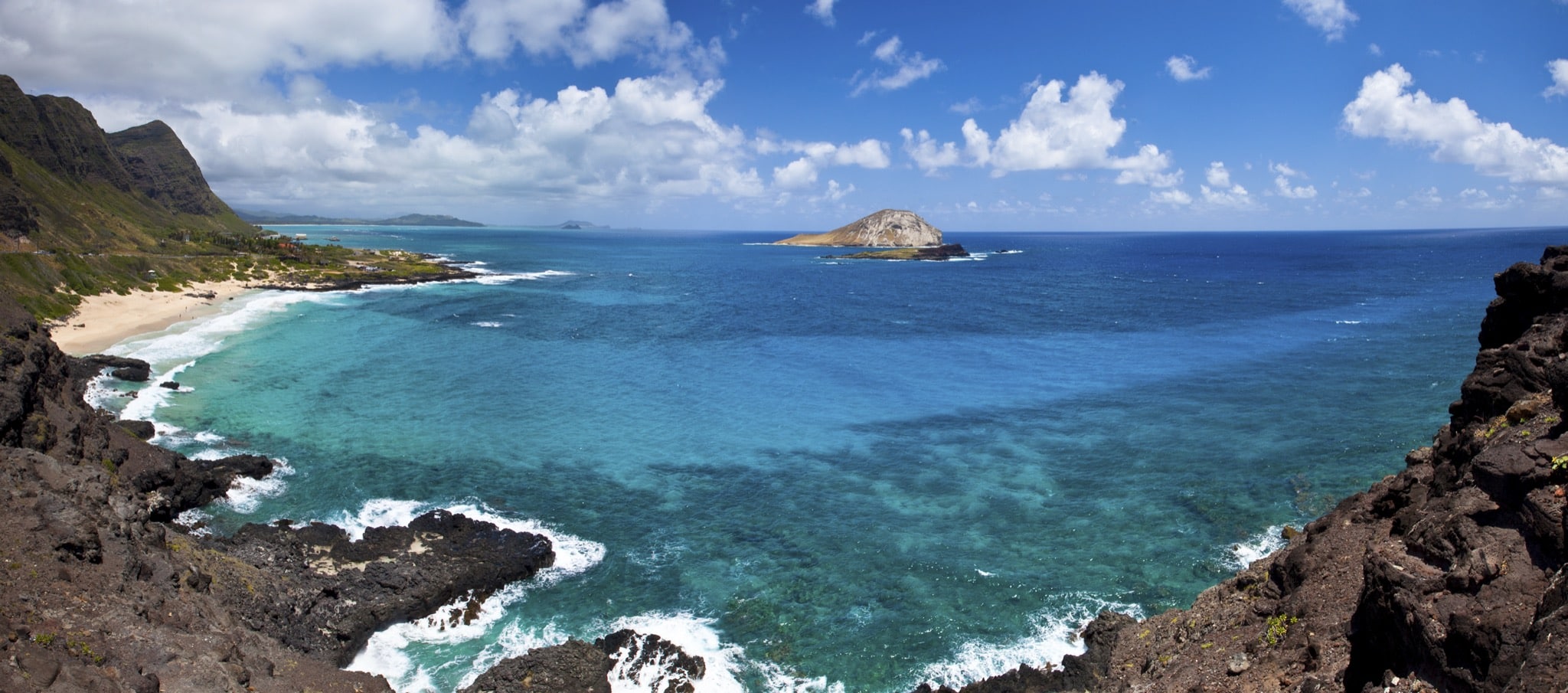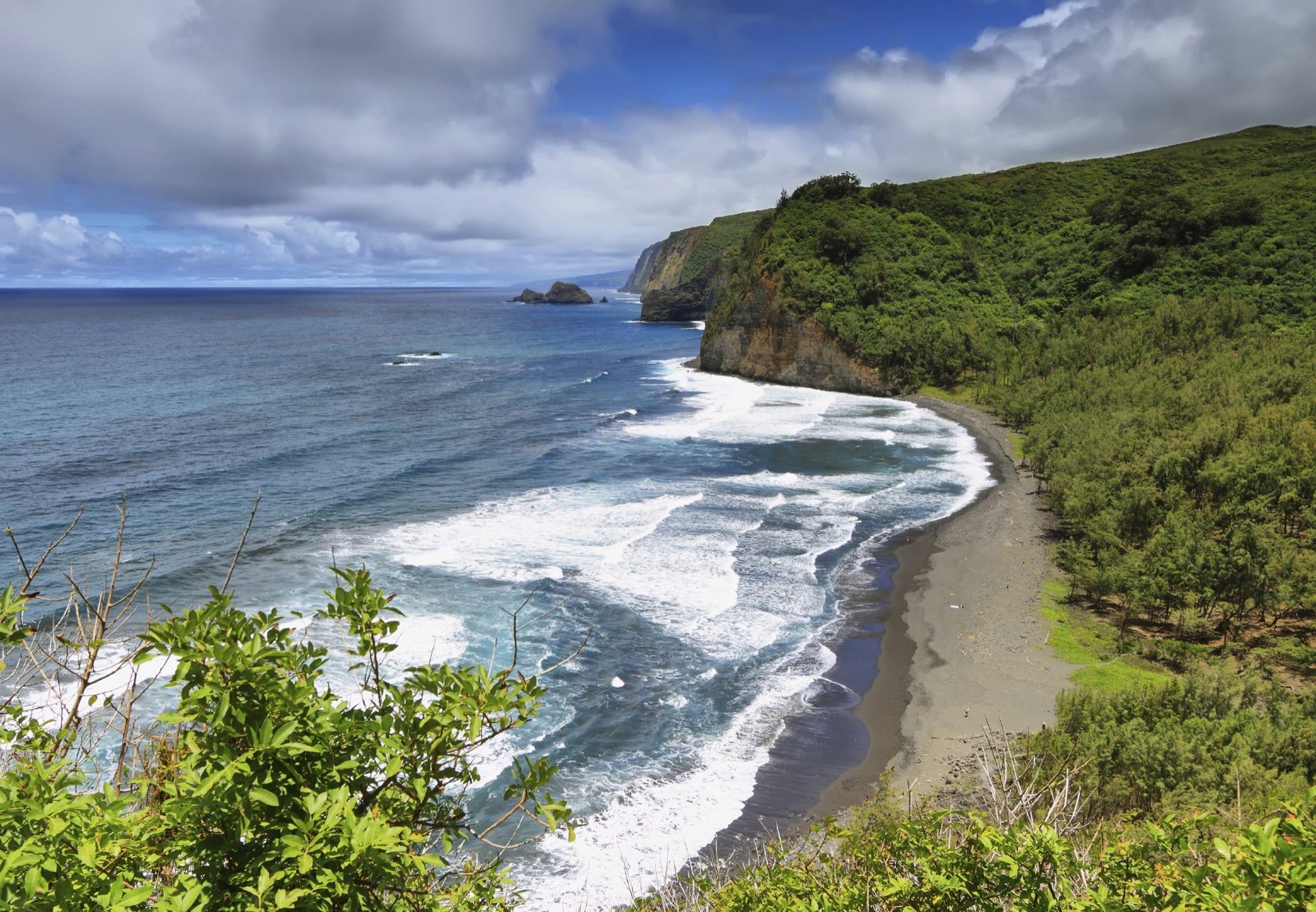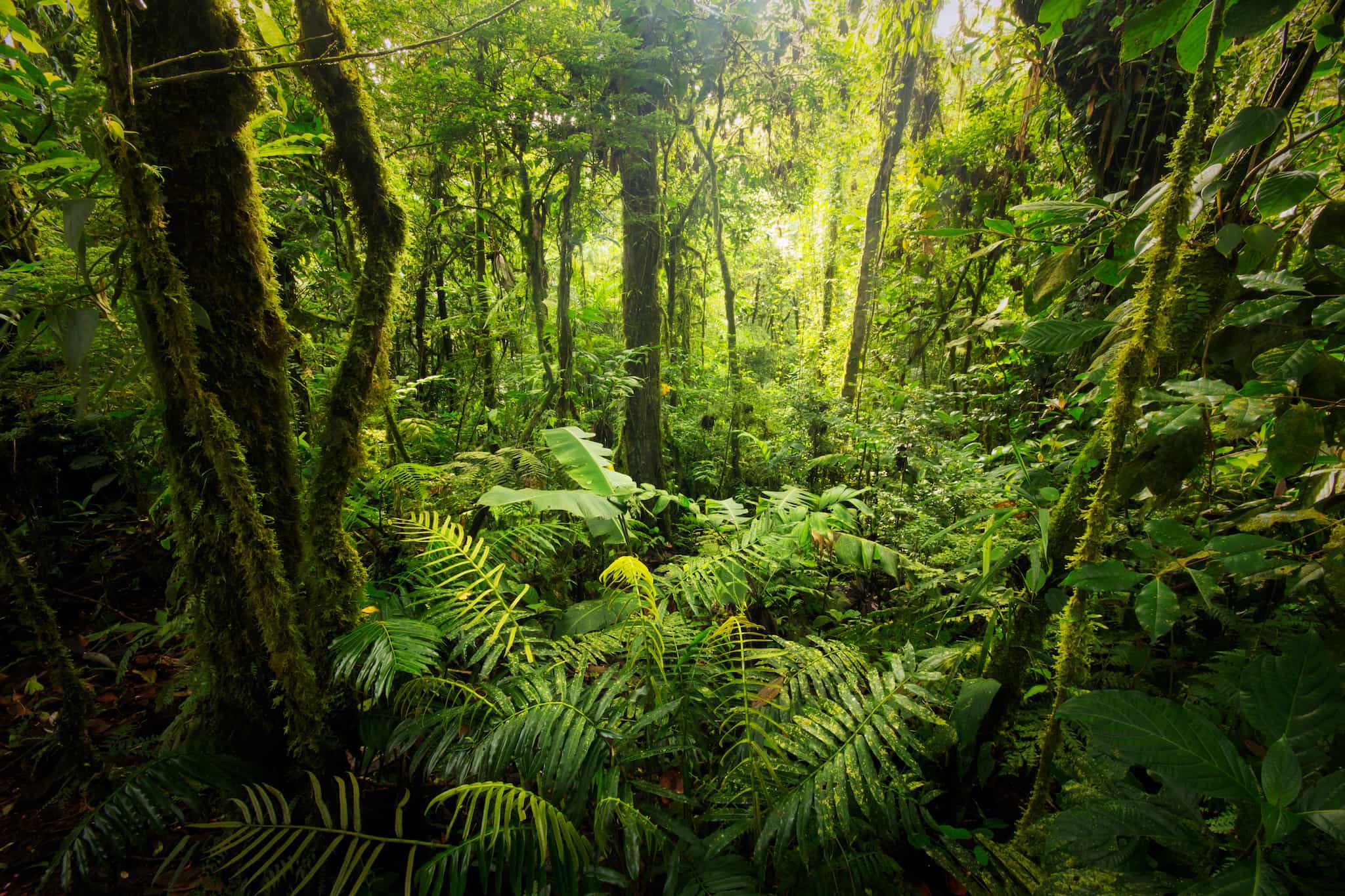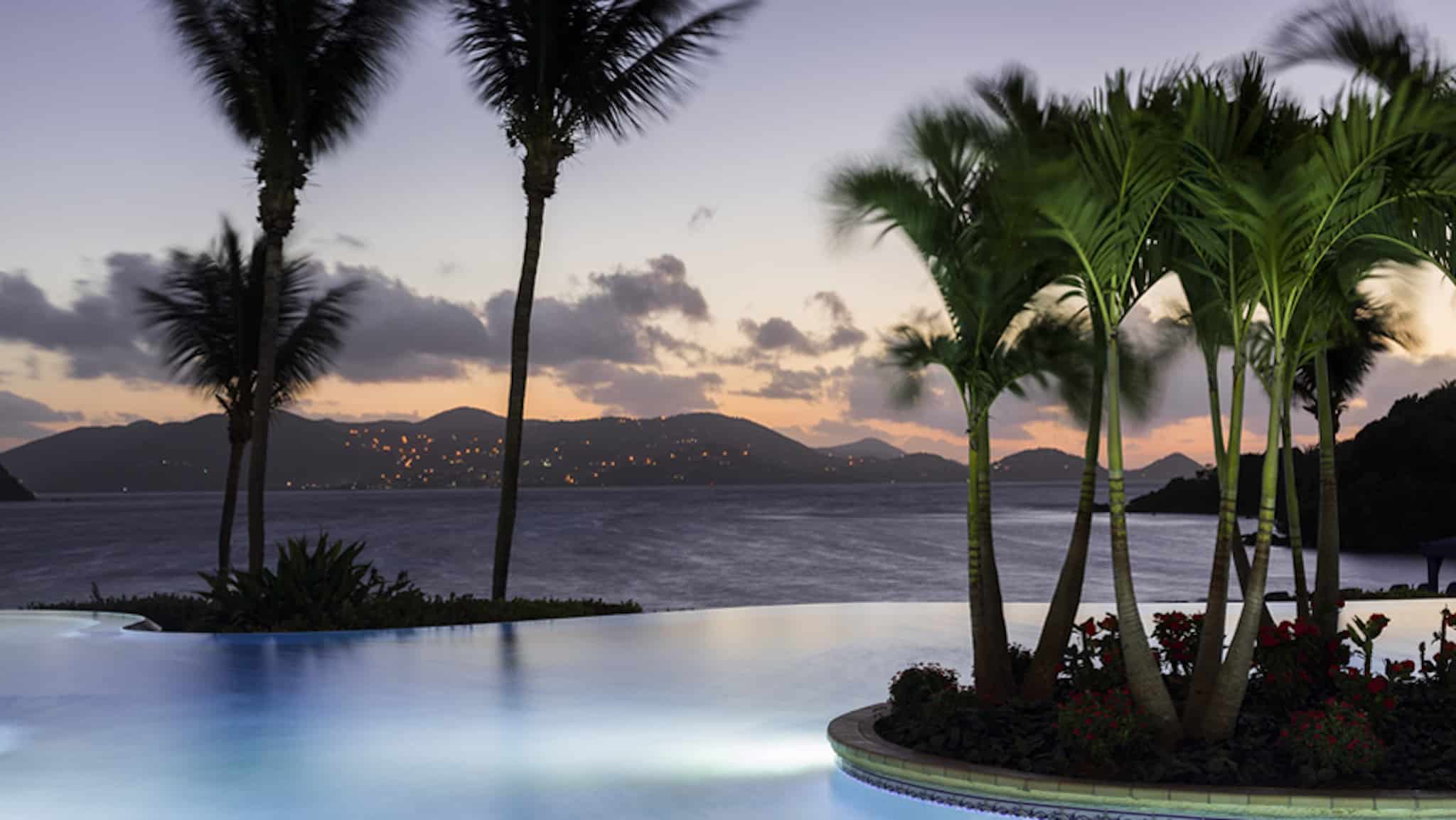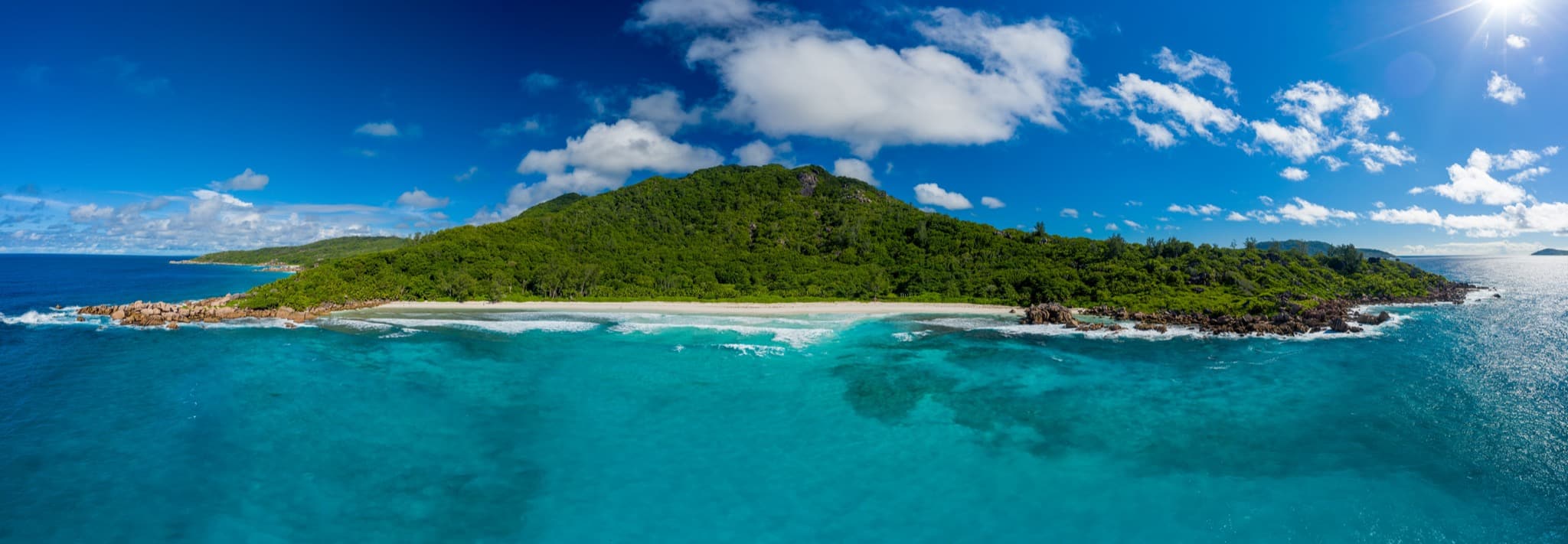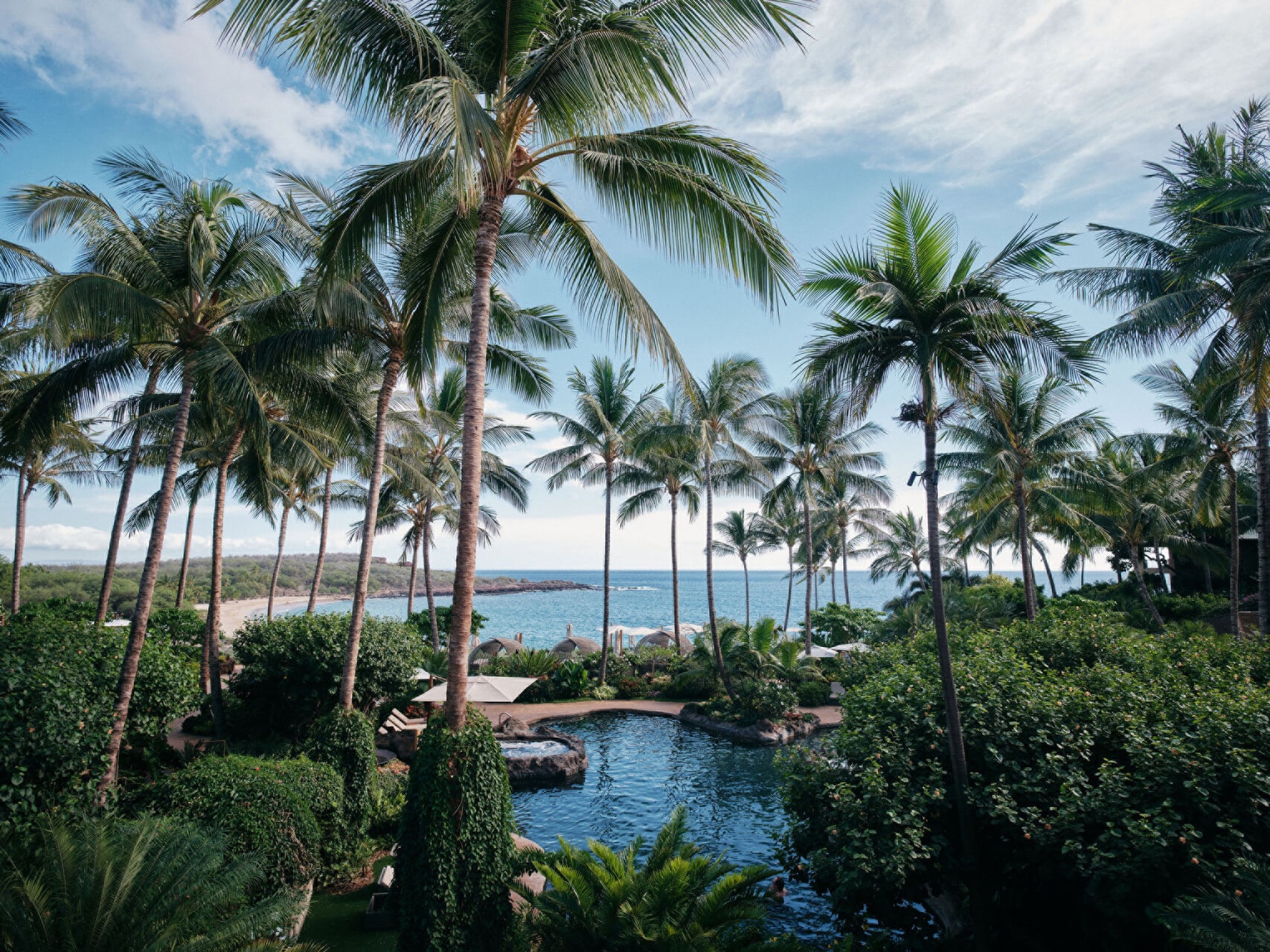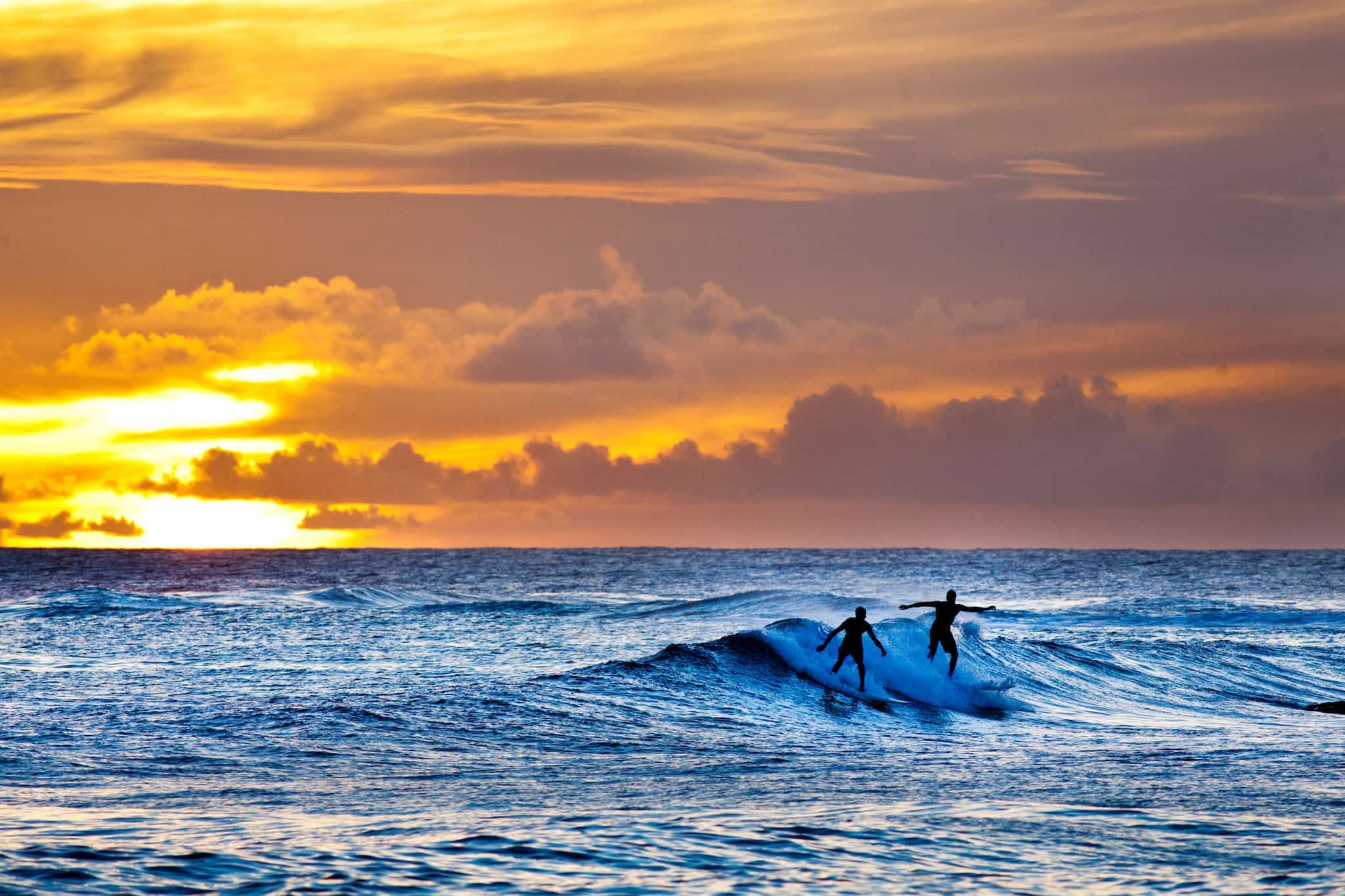Hawaii is home to so many spectacular sights it’s nearly impossible to picture just one iconic landscape when imagining the state’s natural beauty. Sprawling beaches, towering coastal cliffs, tropical rainforests, volcanoes and red-hot lava flows are just a few of the picturesque scenes the islands provide—not to mention the bounty of bays and lagoons that make for stunning views of the Pacific Ocean.
Nuuanu Pali Lookout, Oahu
Rising 1,200 feet above the coastline of Oahu, Nuuanu Pali Lookout provides magnificent views of the windward side of the island. Both scenic and historic it is a site where King Kamehameha l won a battle uniting the Hawaiian Islands. The lush Koolau Cliffs frame the scene, which stretches past the Kaneohe district of Honolulu to the azure water of Kaneohe Bay. The lookout, located in Nuuanu Pali State Wayside Park is easily accessible by car, making it easy to enjoy the panoramic vista. Visitors can also try reclining on the wind; the gusts at the lookout are often so strong that you can lean back with all your body weight without worry of falling over.
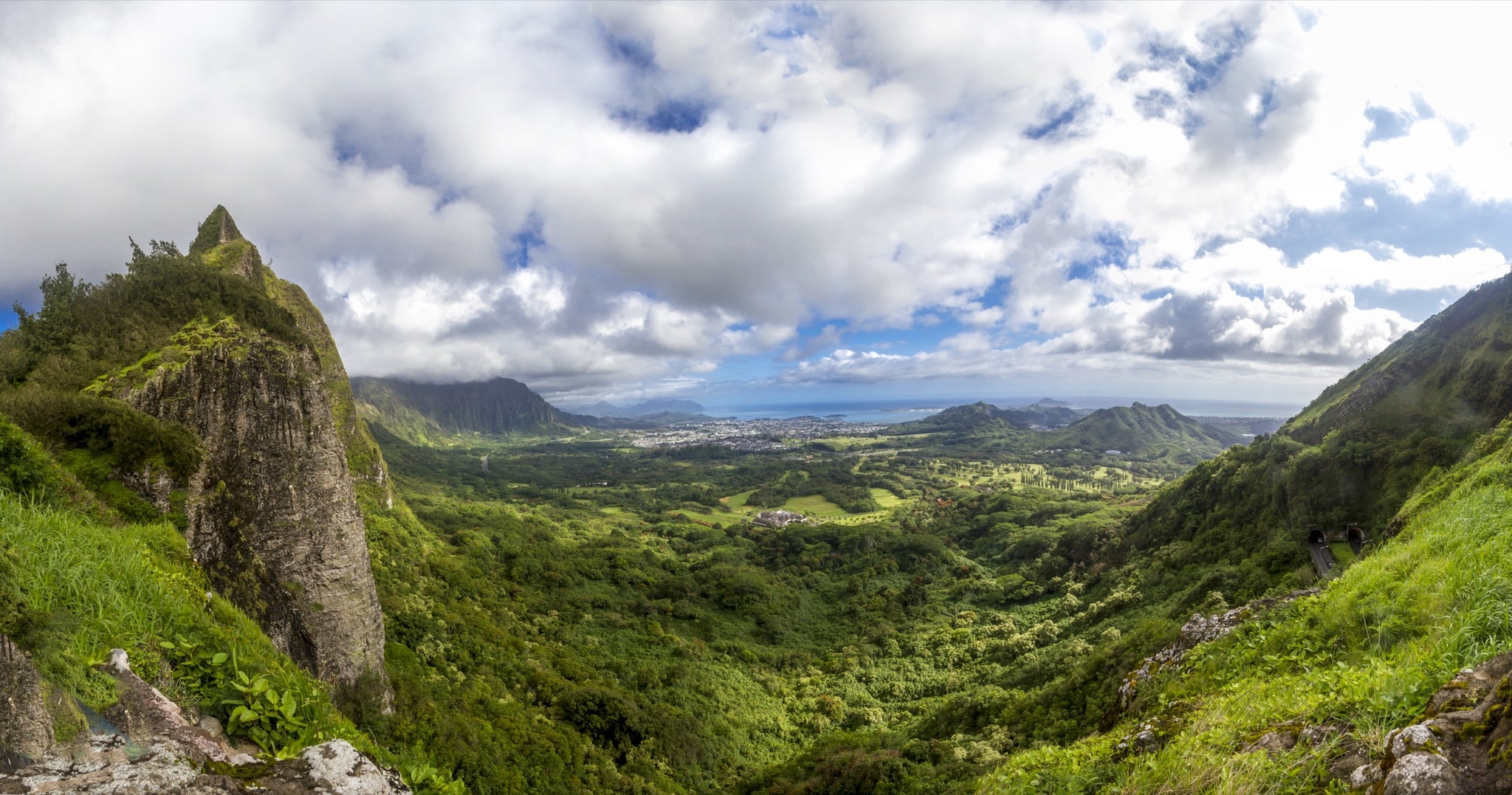
Thurston Lava Tube, Island of Hawaii
Journey into the depths of the Earth through a lava cave at Hawaii Volcanoes National Park. The Thurston Lava Tube, AKA Nahuku, formed more than 500 years ago as super-heated lava built up and created a conduit as it pushed its way through the massive Kilauea volcano. The Thurston tube is now dormant and safe for hikers to traverse part of its length. Inside the cool, damp, and dark tunnel live ecosystems of creatures found in the Island of Hawaii. For the truly adventurous, a 50-yard segment of the lava cave is unlighted, and you can feel your way through it to the other end, which leads to a tropical rainforest.
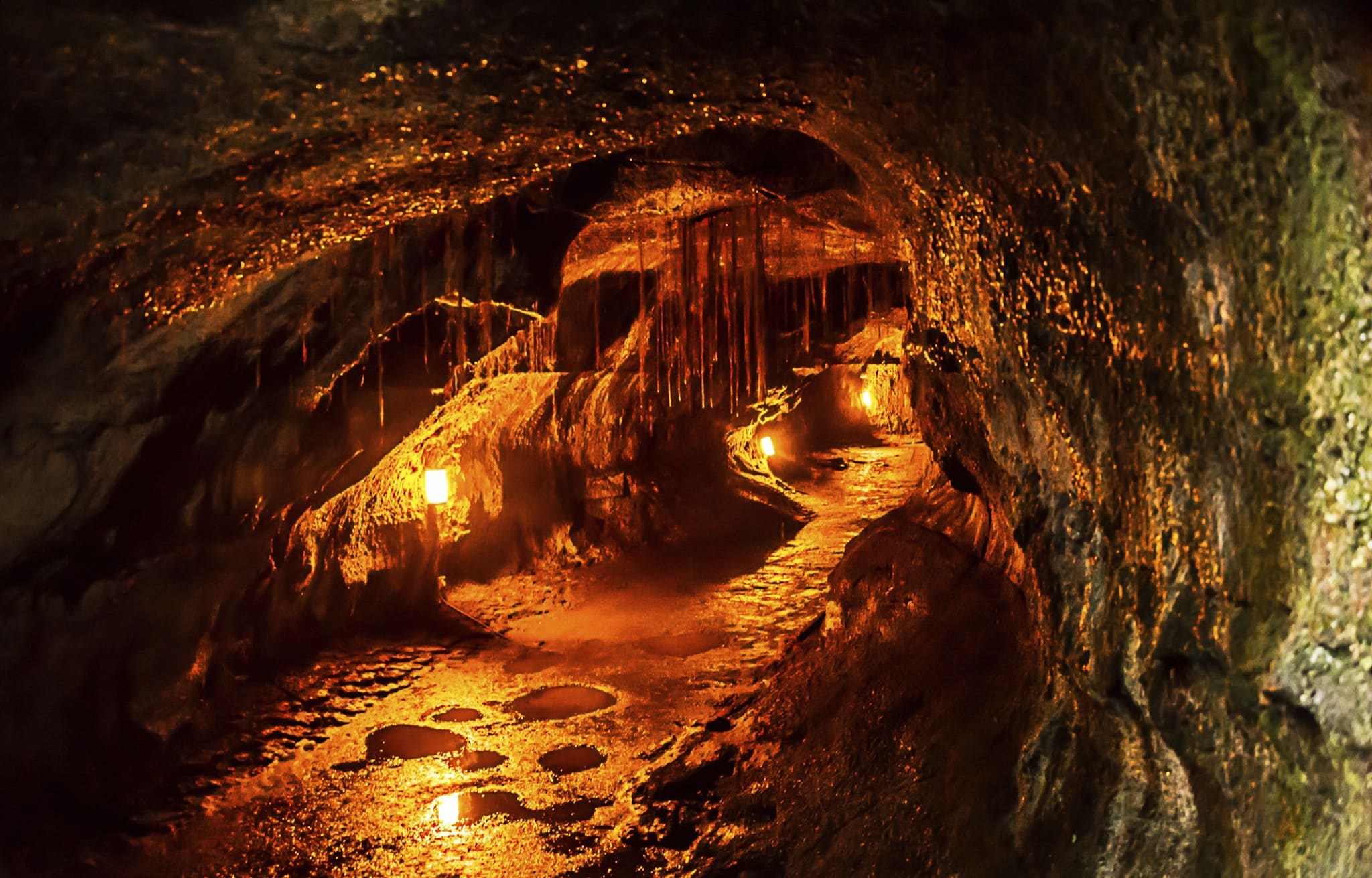
Lava Tours, Island of Hawaii
Still chock-full of active volcanoes, Hawaii is an ever-changing landscape building upon itself with new lava flows. Lava frequently runs through subterranean channels and escapes into the Pacific Ocean, creating a dramatic sizzling effect when the hot molten earth hits the cold water. Boat tours offer visitors the rare opportunity to get close to active lava flows and watch the molten rock steam into the ocean as it literally builds the island. Tour guides provide plenty of information about the current flows and historical changes. Evening tours are the best ones to catch to witness the glowing rivers of lava in their full glory.
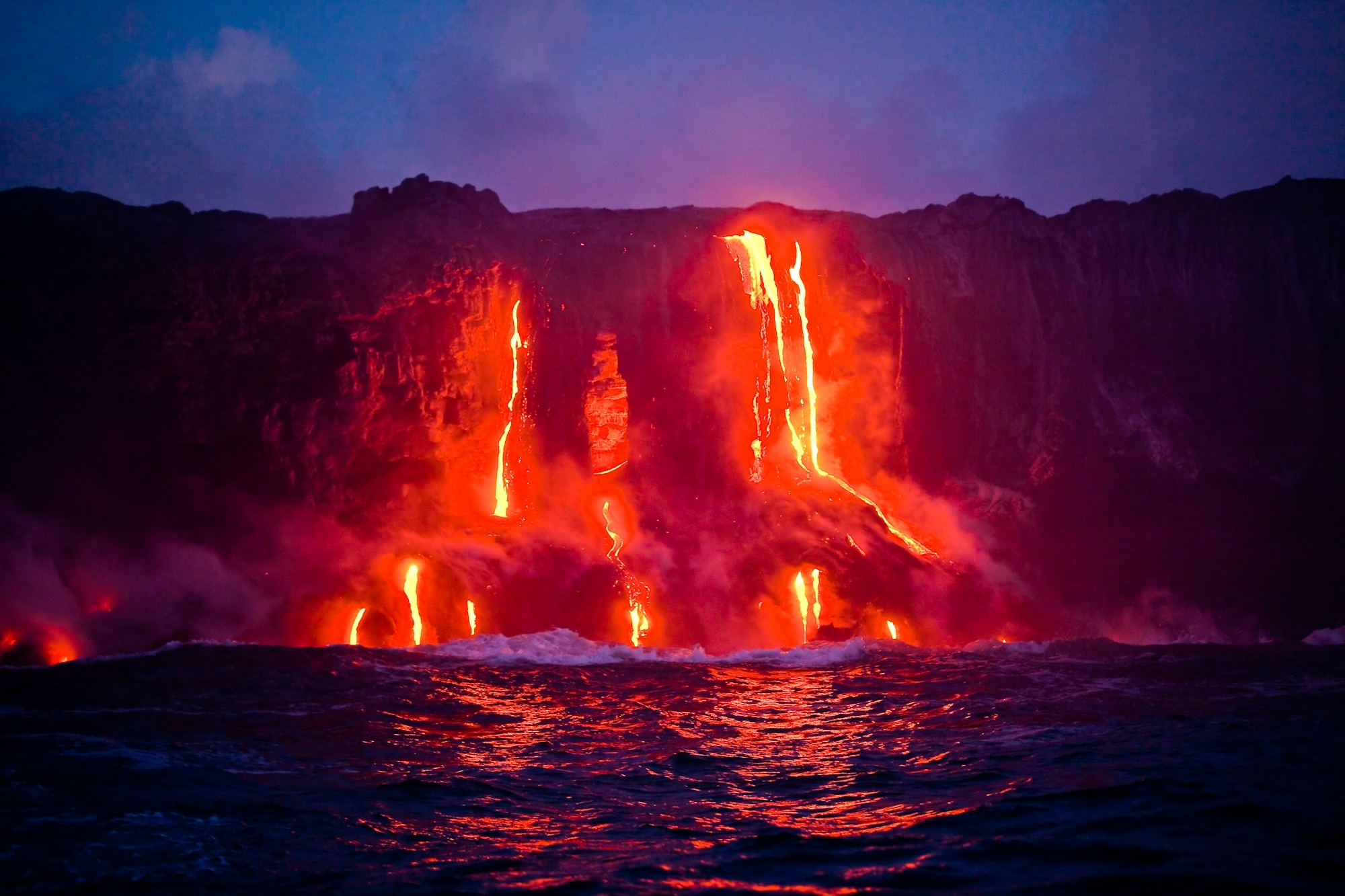
Wailua Falls, Kauai
The twin streams of Wailua Falls were made famous by their appearance in the opening credits of the television show Fantasy Island, but anyone who has driven the island of Kauai might recognize the secluded grotto. Located north of Lihue, the falls are visible from a narrow road that cuts through the jungles of Kauai, where the falls flow 80 feet into a shallow pool. View the twin falls from the road or scramble down a slippery path for a refreshing swim in the idyllic location. The twin falls are fed by the nearby Wailua River, a prime kayaking spot in Kauai. A trip to the falls in the morning may reveal a rainbow created as the sunlight meets the mist of the falls.
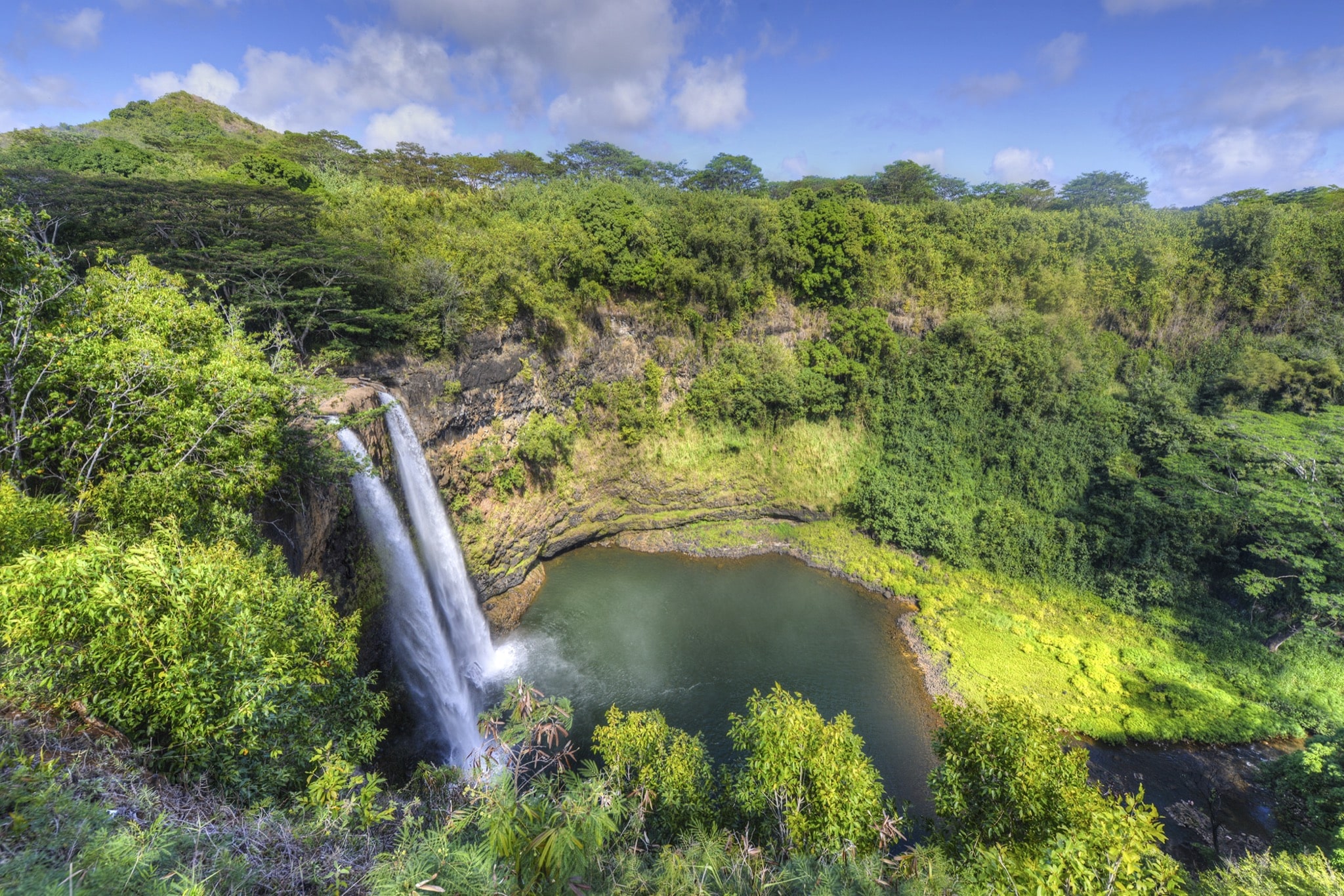
North Shore, Oahu
Oahu is world famous for the massive waves that curl and crash on the island’s North Shore. The region is a mecca for surfers year-round, but winter brings the gnarliest plunging breakers, which only the most skilled wave riders attempt to tame. Sharp drop-offs in the ocean floor combine with winds brought in from storms in the northern Pacific Ocean to stack up waves that can reach face heights taller than 40 feet. Some waves are so big that they cause the beach to tremble when they crash. Famous breaks like Banzai Pipeline, Sunset Beach, and Waimea Bay host international surfing competitions during the winter months.
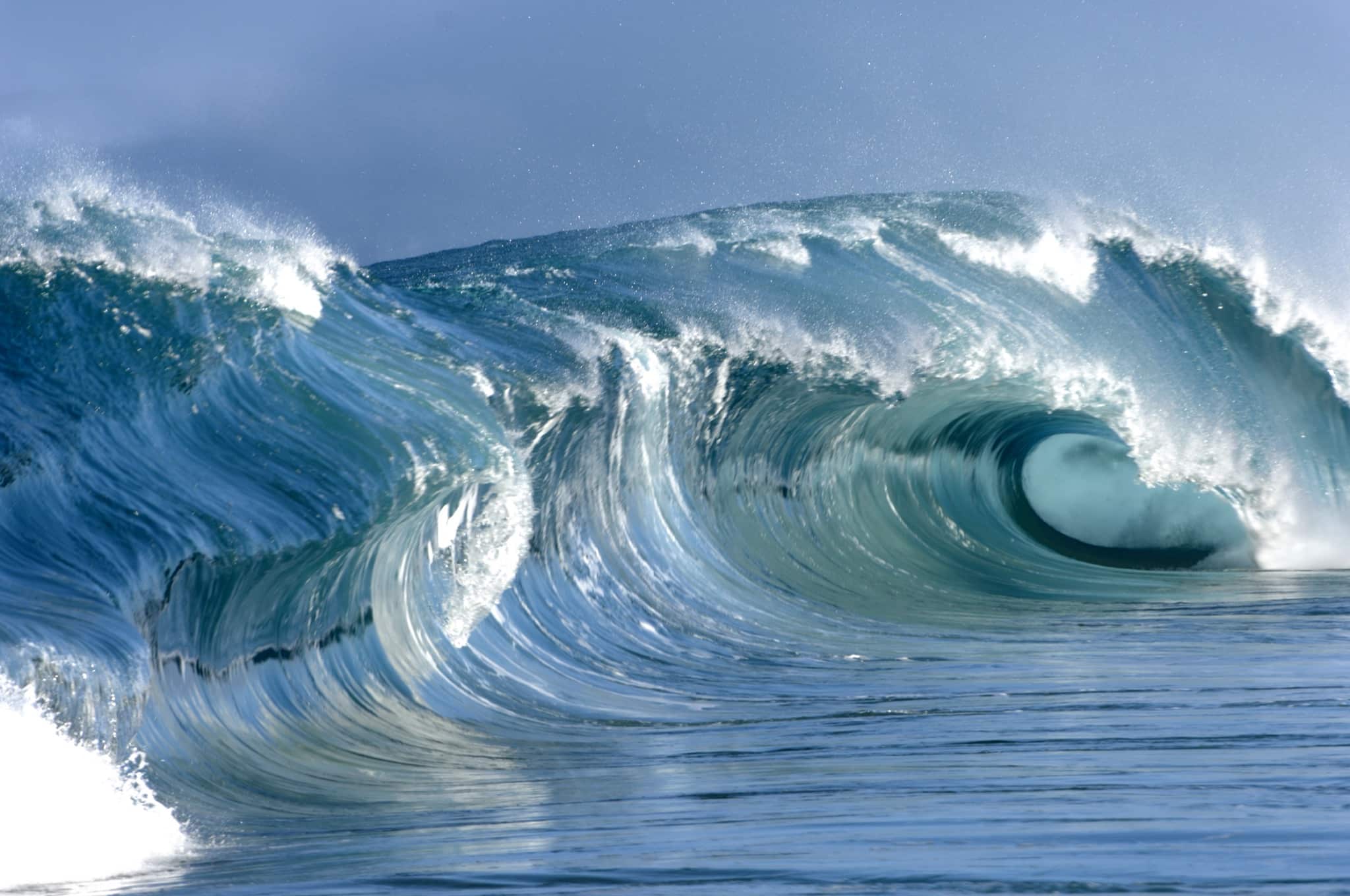
Haleakala Volcano, Maui
Haleakala National Park is among the reasons why Maui is one of the most popular of Hawaii’s islands. The park is home to its namesake volcano, among other national treasures like a bamboo forest and tropical rainforest. More than 35 miles of hiking trails wind around the dormant volcano’s crater, including the Pipiwai Trail that can also be explored on horseback. Walkers seeking an easier route to the summit can drive to the House of the Sun Visitor Center at an elevation of 9,740 feet, then hoof it the final 300 feet up to the summit for stunning sunrise and sunset views above the cloud line.


